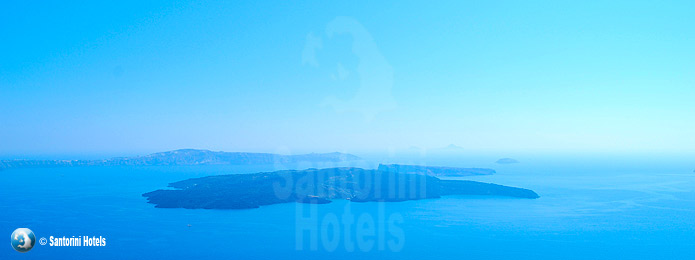 |
When we refer to the volcano, we mean Palea (old) and Nea (new) Kameni, two small islands of black lava positioned in the centre of the basin of Santorini. Santorini took its present shape, an arch surrounding the volcanic peaks of Palaia and Nea Kameni, 3,500 years ago when an eruption destroyed every single living and non living thing on the island along with all the cities on Crete, obliterated by the huge waves following the eruption. About three-quarters of Santorini vanished, the greater part of the island was sent to the bottom of the sea and because of that, myths have been created such as the one of the lost Atlantis which is said to be there. |
|
The rain of lava and ash that fell over the landscape for at least four days and blotted out the sun can be seen in the red, gray and brown layers in the cliffs that plunge dramatically 900 feet into the sea. The beaches of Santorini are all covered in black sand and pebbles, noticed today, because of that eruption which formed the caldera, the sparkling water-filled crater, that rests in the outstretched arms of the island that is now a harbor. The volcano which is still active can be seen in the center of the caldera. A series of heavy eruptions took place from 1925 until 1950. 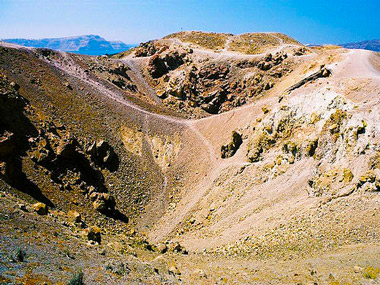
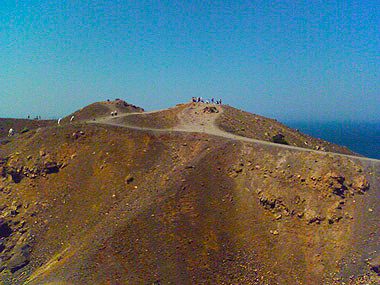
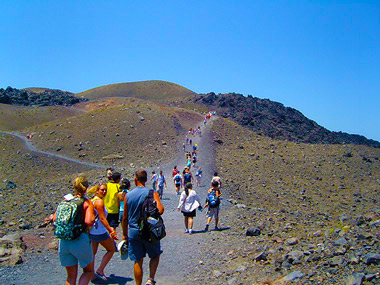
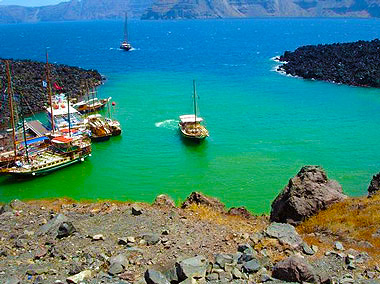
|
|
The islets of Palaia and Nea Kameni are still volcanically active and can be visited on half day excursions from Athinios port. Many tourists visit them every day during the summer and afterwards they go for swimming at the hot springs which maintain their high temperature because of the volcanic activity. 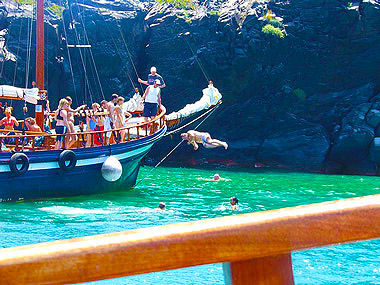
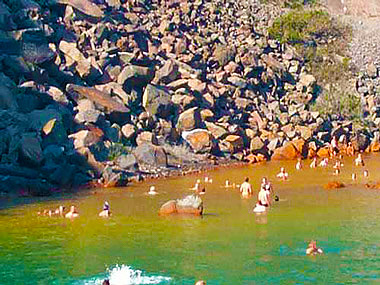
|
Santorini Volcano






